19 December 2024 : Daily Current Affairs
1. Formulate policy to manage sacred groves, SC tells govt.
- 1. Formulate policy to manage sacred groves, SC tells govt.
- 2. Radhakrishnan Panel Proposes Overhaul of National Entrance Exams for Transparency and Efficiency
- 3. Cheetah Action Plan for Gandhi Sagar: Prey Augmentation, Predator Management, and Genetic Conservation in Focus
- 4. PM-DAKSH YOJANA
- 5. Aims of Anusandhan National Research Foundation
- Prelims Facts
- 1. Wildlife experts tag almost-blind Ganges river dolphin for the first time in India
- 2. Second survey ship INS Nirdeshak inducted into Navy
- 3. Graceful act
- 4. Marine Heatwave “The Blob” Caused Deaths of Alaskan Seabirds, Study Reveals
- 5. Indian Oceanographers Capture First-Ever Image of Active Hydrothermal Vent, Boosting Deep Ocean Exploration
(Source – The Hindu, International Edition – Page No. – 6)
| Topic: GS3 – Environment |
| Context |
|
Significance of the Move
- The court’s recommendation is important, as it acknowledges the cultural and traditional rights of communities while also recognizing the biodiversity conservation value of sacred groves.
- Sacred groves are found in regions like Tamil Nadu, Kerala, Karnataka, Maharashtra, and Rajasthan.
Centre’s Role in Preservation
- The court aligned the preservation of sacred groves with community rights, asking the Ministry of Environment, Forest and Climate Change to lead efforts in protecting them.
- The Ministry is tasked with conducting a nationwide survey to identify the area and boundaries of sacred groves, ensuring their protection from unauthorized land use.
Village Example
- The court cited the example of Piplantri village in Rajasthan, where community-driven efforts transformed barren land into lush green groves, addressing ecological and environmental challenges.
Ecological Value
- The judgment emphasized the immense ecological value of sacred groves, urging their identification and protection as community reserves.
| Sacred Groves |
|
| Practice Question: Evaluate the role of sacred groves in India’s biodiversity conservation and explain how a national policy for their management could enhance ecological sustainability. (150 Words /10 marks) |
2. Radhakrishnan Panel Proposes Overhaul of National Entrance Exams for Transparency and Efficiency
(Source: Indian Express; Section: Explained; Page: 19)
| Context: |
|
Analysis of News:
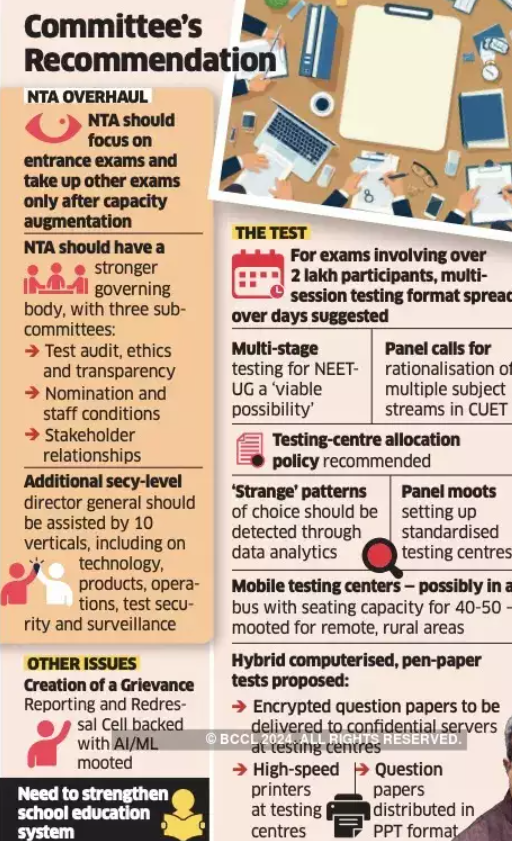
About Dr. K Radhakrishnan Committee
- The Dr K Radhakrishnan committee was formed in June 2024 following a NEET-UG exam paper leak that indicated serious shortcomings in exam security.
- The Ministry of Education tasked the seven-member committee with recommending reforms for the examination process, strengthening data security protocols, and improving the structure and operation of the National Testing Agency (NTA).
Recommendations of the Radhakrishnan Panel for National Entrance Exams
Restructuring the National Testing Agency (NTA)
- The panel recommends that the NTA focus exclusively on conducting entrance examinations, reducing its reliance on outsourced agencies.
- It suggests enhancing the NTA’s capacity with domain-specific resources and a leadership team led by additional director generals.
- To streamline its operations, the NTA should prioritize entrance exams over recruitment tests until it is better equipped.
Involvement of State and District Authorities
- Drawing parallels with election management, the panel advocates involving State and district-level officials to ensure smooth exam operations.
- Coordination committees at these levels, including the NTA, NIC, police, and intelligence agencies, will secure question papers and testing centres.
- It proposes sealing testing centres under strict supervision, continuous CCTV monitoring, and appointing a presiding officer at each test centre.
Enhanced Testing Processes and Security Measures
- The panel suggests multi-session and multi-stage testing, particularly for NEET-UG, to improve fairness and transparency.
- Testing centres should be allocated in candidates’ districts to avoid anomalies.
- Security measures include encrypted question papers printed on-site, delivery of digital question papers, and advanced biometric verification systems like Digi-Exam to prevent impersonation.
District-Level Testing Infrastructure
- Establishing one testing centre per district, supplemented by mobile centres for remote areas, is recommended.
- The panel emphasizes creating a nationwide network of standardized computer-based testing (CBT) centres, leveraging Kendriya Vidyalayas and Navodaya Vidyalayas.
- This would enable a capacity of 2-2.5 lakh test-takers per session and reduce reliance on private service providers.
Adoption of Computer-Adaptive Testing
- For the long-term, the panel advocates a shift to computer-adaptive testing, where questions are tailored to individual abilities in real-time, enhancing assessment accuracy and security.
- This would harmonize testing standards across undergraduate admissions.
Unifying Testing Criteria
- To streamline undergraduate admissions, the panel recommends uniform eligibility, admission criteria, and testing frameworks.
- Tests should have consistent modes, sessions, and frequencies to ensure fairness and transparency.
Digital Infrastructure Development
- The committee underscores the need for collaboration with educational institutions to build digital infrastructure for CBT centres, thereby expanding capacity and reducing operational risks.
- These measures aim to strengthen exam processes, ensure security, and modernize the national testing framework for greater transparency and efficiency.
| Practice Question: Discuss the key recommendations of the Radhakrishnan panel on reforming national-level entrance examinations in India. How can these measures enhance transparency, security, and efficiency in the examination process? (250 words/15 m) |
3. Cheetah Action Plan for Gandhi Sagar: Prey Augmentation, Predator Management, and Genetic Conservation in Focus
(Source: Indian Express; Section: Express Network; Page: 08)
| Context: |
|
Analysis of News:
About Gandhi Sagar Wildlife Sanctuary
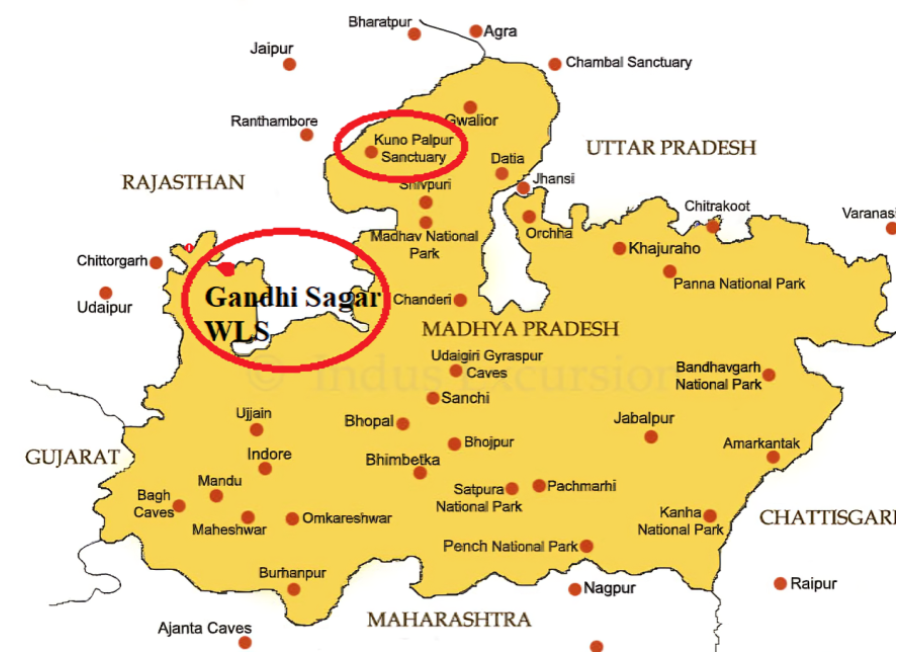
- Location:
- Notified in 1974, encompassing the districts of Mandsaur and Neemuch in western Madhya Pradesh, bordering Rajasthan.
- The Chambal River bifurcates the sanctuary into two nearly equal parts, with the Gandhi Sagar Dam situated within the sanctuary.
- Ecosystem:
- Its ecosystem is characterised by its rocky terrain and shallow topsoil, which supports a savanna ecosystem.
- This comprises open grasslands interspersed with dry deciduous trees and shrubs. Additionally, the riverine valleys within the sanctuary are evergreen.
- Ideal Habitat for Cheetahs:
- The sanctuary’s resemblance to the Maasai Mara, a renowned national reserve in Kenya known for its savanna wilderness and abundant wildlife, highlights its suitability for cheetahs.
Key Habitat and Prey Augmentation Measures
The sanctuary’s unique mix of grasslands, deciduous forests, and riverine patches makes it an ideal cheetah habitat.
- Prey Base Augmentation:
To sustain 6-8 cheetahs initially, the sanctuary’s existing prey population of 475 animals will be augmented by introducing 1,500 prey species such as chital, blackbuck, and nilgai.
- Monitoring and Management:
Prey density and behavior will be monitored using distance sampling, camera-trap surveys, and radio-collaring.
Leopard Relocation and Predator Management
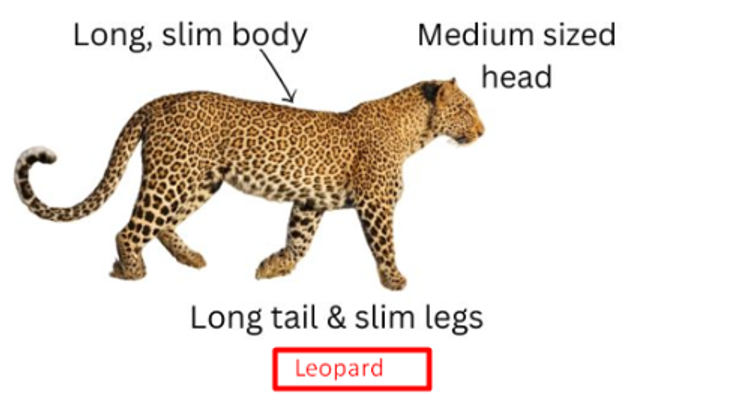
Leopards, with an estimated population of 70 in the West Range, pose a significant threat to cheetahs.
- Relocation Efforts:
All leopards within the predator-proof fenced area (64 sq. km) will be relocated to prevent interspecific conflicts.
- Comprehensive Research:
At least 10 leopards will be GPS-collared to study their movements and interactions with other carnivores, aiding future coexistence strategies.
Cheetah Selection and Genetic Foundation
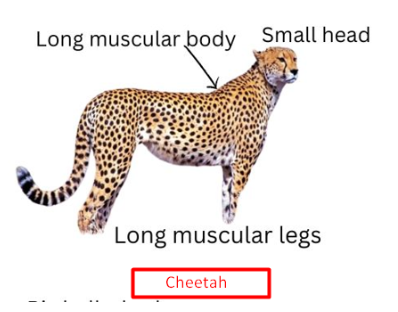
To ensure a robust cheetah population, the plan emphasizes genetic diversity and behavioral suitability.
- Selection Criteria:
Cheetahs will be sourced from African reserves, selected for their genetic health, hunting skills, and minimal human imprinting.
- Genetic Monitoring:
Advanced genetic analysis will be used to maintain a diverse gene pool and manage inbreeding risks.
Monitoring and Research Framework
The plan incorporates rigorous monitoring mechanisms to track cheetah health and behavior.
- Individual Profiling:
A database of cheetah profiles will track demography and population dynamics.
- Technology Integration:
Infrared camera traps and scat analysis will provide insights into carnivore interactions and prey adaptation.
Long-Term Vision and Expansion
The Gandhi Sagar initiative is part of a broader cheetah conservation strategy, aiming to restore ecosystems and expand populations.
- Source Area Development:
The fenced area will serve as a cheetah breeding and source site for future translocations.
- Regional Expansion:
Potential sites like Rajasthan’s Bhainsrorgarh Wildlife Sanctuary and Mukundara Hills Tiger Reserve will undergo similar habitat restoration and prey supplementation.
Conclusion
- The action plan for Gandhi Sagar Wildlife Sanctuary marks a significant step in India’s efforts to reintroduce cheetahs and restore ecological balance.
- By addressing challenges such as prey scarcity and predator conflicts, it aims to establish a sustainable cheetah population while fostering coexistence with other species.
| Some Facts about Cheetahs |
|
| Practice Question: Discuss the key components of the Cheetah Action Plan for Gandhi Sagar Wildlife Sanctuary. How do these measures aim to ensure the successful reintroduction and survival of cheetahs in India? (250 words/15 m) |
4. PM-DAKSH YOJANA
(Source – https://pib.gov.in/PressReleseDetail.aspx?PRID=2085557®=3&lang=1 )
| Context |
|

PM-DAKSH Scheme
- Full name: Pradhan Mantri Dakshta Aur Kushalta Sampann Hitgrahi (PM-DAKSH) Yojana
- Launched: 2020-21
- Ministry: Ministry of Social Justice and Empowerment
- Objective: To enhance the skill levels of marginalized groups to make them employable for wage or self-employment.
- Target Groups:
- Scheduled Castes (SCs)
- Other Backward Classes (OBCs)
- Economically Weaker Sections (EWS)
- De-notified Tribes (DNTs)
- Safai Karamcharis (including waste pickers)
- Components:
- Short-term training programs
- Long-term training programs
- Up-skilling/Re-skilling programs
- Entrepreneurship development programs
- Benefits:
- Skill development training from certified institutions
- Stipend during training
- Certification upon successful completion
- Placement assistance
- Significance:
- Addresses social inequality by providing opportunities for marginalized communities.
- Contributes to the development of a skilled workforce in India.
- Empowers individuals with skills for economic independence.
5. Aims of Anusandhan National Research Foundation
(Source – https://pib.gov.in/PressReleseDetail.aspx?PRID=2085535®=3&lang=1 )
| Context |
|
Anusandhan National Research Foundation (ANRF)
- Established: 2023 by an Act of Parliament (ANRF Act, 2023)
- Headquarters: New Delhi, India
- Objective: To seed, grow and promote Research and Development (R&D) and foster a culture of research and innovation throughout India.
- Functions:
- Funding research projects across various disciplines.
- Creating a national framework for research and innovation.
- Fostering collaborations between academia, industry, and government.
- Promoting international research collaborations.
- Developing research infrastructure and human resources.
- Focus Areas:
- Natural sciences (including mathematical sciences)
- Engineering and technology
- Environmental and earth sciences
- Health and agriculture
- Humanities and social sciences with scientific and technological interfaces
- Governance:
- Governing Board chaired by the Prime Minister of India.
- Executive Council responsible for day-to-day operations.
- Funding:
- Government allocation
- Contributions from public and private sectors, philanthropists, and international organizations.
- Significance:
- Aims to position India as a global leader in research and innovation.
- Seeks to address national priorities and societal challenges through research.
- Expected to boost economic growth and sustainable development.
Prelims Facts
1. Wildlife experts tag almost-blind Ganges river dolphin for the first time in India
(Source – The Hindu, International Edition – Page No. – 2)
| Context |
|
Ganges River Dolphin
- Species: Platanista gangetica gangetica (subspecies of South Asian River Dolphin)
- Habitat: Ganges, Brahmaputra, Meghna, and Karnaphuli-Sangu river systems in India, Nepal, and Bangladesh.
- IUCN Status: Endangered

- Threats: Pollution, habitat fragmentation (dams, barrages), accidental fishing, poaching.
- Importance:
- Indicator species for river health.
- Apex predator, maintains aquatic ecosystem balance.
- Cultural significance in local communities.
- Conservation Efforts:
- National Aquatic Animal of India.
- Protected under Schedule I of the Indian Wildlife (Protection) Act, 1972.
- Project Dolphin launched in 2020 for conservation.
- Unique Features:
- Long, thin snout.
- Poor eyesight, relies on echolocation.
- Surfaces frequently to breathe.
- Also known as: Susu, Shushuk, Blind Dolphin.
2. Second survey ship INS Nirdeshak inducted into Navy
(Source – The Hindu, International Edition – Page No. – 3)
| Context |
|
INS Nirdeshak:
- Class: Second ship of the Survey Vessel (Large) project
- Role: Designed to conduct hydrographic surveys, aid navigation, and support maritime operations
- Capabilities: Equipped with advanced survey equipment for precise oceanic data collection, ensuring accurate charts for maritime safety
- Strategic Importance: Enhances India’s maritime operations and strengthens maritime diplomacy, with foreign fleets seeking hydrographic cooperation
- Significance: A sophisticated platform for accurate data processing, supporting India’s naval presence and operational readiness
3. Graceful act
(Source – The Hindu, International Edition – Page No. – 3)
| Context |
|
Nangiarkoothu
- Traditional dance-drama form of Kerala.
- Solo performance by women.
- Performed in Koothambalams (temple theatres).
- Based on Sanskrit literature, primarily Sri Krishna Charitam.
- Nangyaramma: Traditionally women from the Ambalavasi Nambiar community were the performers.
- Elements:
- Abhinaya (expression) is central.
- Combines acting, singing, and dancing.
- Elaborate hand gestures (mudras) and facial expressions.
- Minimal use of pure dance (nritta).
- Accompaniment: Mizhavu (a type of drum), cymbals, and vocals.
- Revival: Experienced a decline but has been revived in recent decades.
- Notable Artists: Margi Sathi, Usha Nangiar.
- Significance: Preserves ancient traditions and empowers women in the arts.

4. Marine Heatwave “The Blob” Caused Deaths of Alaskan Seabirds, Study Reveals
(Source: Indian Express; Section: Explained; Page: 19)
| Context: |
|
Analysis of News:
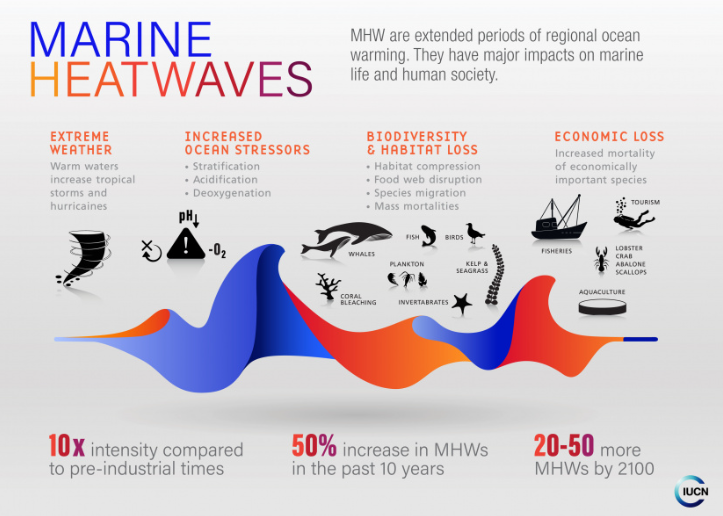
Key Findings of the Study
- A marine heatwave, termed “The Blob,” from 2014 to 2016 caused the mass death of over four million common murres in Alaska.
- This event is recorded as the largest die-off of a single wild bird or mammal species.
- The heatwave triggered a domino effect in the oceanic ecosystem, collapsing fish populations essential for murres’ survival.
- Alarmingly, eight years post-event, the murres have shown no signs of recovery, highlighting the catastrophic and long-lasting impact of such environmental disturbances.

Causes and Consequences
- The warming of the ocean’s surface disrupted the food web, severely affecting species dependent on fish, like murres, while other species displayed resilience.
- This selective impact points to “pinch points” in the food web, where critical species or resources were disproportionately affected.
- Persistent heat absorption by oceans, driven by human activities like fossil fuel combustion and ecosystem destruction, exacerbates such crises, with record-breaking ocean temperatures seen in recent years.
Study Methodology and Insights
- The study utilized before-and-after population counts at 13 murre breeding colonies across the Gulf of Alaska and the Eastern Bering Sea.
- This method allowed researchers to extrapolate population declines with greater reliability.
- The findings were consistent across all colonies, indicating a widespread and uniform impact of the heatwave on murres.
Implications for Marine Ecosystems
- The study underscores the vulnerability of marine ecosystems to climate-induced changes.
- With predictions of more frequent and intense marine heatwaves, the risks to biodiversity and ecosystem stability are escalating.
- The inability of murres to recover even after eight years signals the potential for long-term ecological imbalance.
Call for Action
- Addressing the root causes of ocean warming by reducing greenhouse gas emissions and protecting marine ecosystems is critical.
- The study highlights the urgent need for adaptive conservation strategies to mitigate the cascading effects of climate change on marine life.
5. Indian Oceanographers Capture First-Ever Image of Active Hydrothermal Vent, Boosting Deep Ocean Exploration
(Source: Indian Express; Section: Express Network; Page: 11)
| Context: |
|
Analysis of News:
Understanding Hydrothermal Vents
- Hydrothermal vents are underwater springs located in tectonically active regions.
- Cold seawater at the seabed (around 2°C) seeps through cracks in the ocean crust, interacting with molten magma.
- This process heats the water to temperatures of up to 370°C, which then emerges as mineral-rich plumes through vent chimneys.
- These vents are hotspots for minerals and unique biological ecosystems, supported by chemosynthetic organisms.
Efforts by NCPOR and NIOT
- Since 2012, the National Centre for Polar and Ocean Research (NCPOR) in Goa has conducted geophysical surveys along the Central and Southern Ridges of the Indian Ocean.
- Collaborating with the National Institute of Ocean Technology (NIOT), the team recently utilized an autonomous underwater vehicle (AUV) launched from the research vessel Sagar Nidhi.
- This high-resolution imaging captured a vent chimney, black smokers, and evidence of chemosynthetic life, marking a historic achievement in deep-sea exploration.
Implications for India’s Deep Ocean Mission
- The discovery strengthens India’s Deep Ocean Mission, particularly the Samudrayaan initiative focused on mineral exploration.
- Active hydrothermal vents are valuable sources of metals like copper, zinc, gold, silver, platinum, and cobalt.
- Further studies, including TV-guided sampling, aim to evaluate the economic and biological significance of these deposits.
Biological and Economic Significance
- Hydrothermal venting, active for hundreds to thousands of years, supports unique ecosystems where microbes thrive on mineral-enriched chemicals, akin to photosynthesis in plants.
- Insights into these organisms could deepen our understanding of life in extreme conditions.
- Concurrently, the deposits hold significant promise for mineral extraction, making hydrothermal vents pivotal for scientific and economic exploration.

 Sacred groves, known by various names worldwide, are revered natural sites protected for their ecological and cultural significance.
Sacred groves, known by various names worldwide, are revered natural sites protected for their ecological and cultural significance.